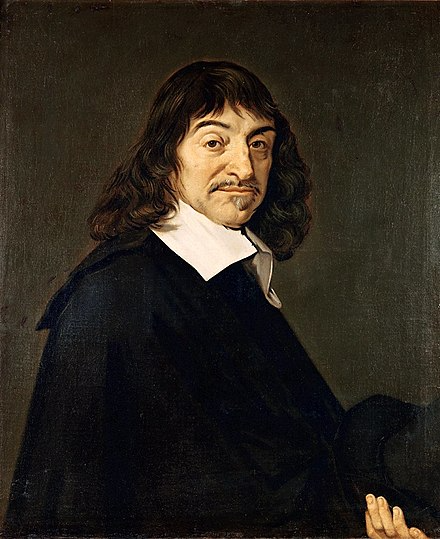A Brief Introduction to Cogito, ergo sum

“Cogito, ergo sum” stems from a question posed by skepticism: How do we know anything exists? How do we know anything is true, rather than being illusions that deceive our senses, or even a dream? In Meditations on First Philosophy, Descartes introduces a bold thought experiment: to systematically doubt everything that can be doubted. His purpose is to destroy the old system of knowledge and seek an indestructible foundation of certainty. Descartes first doubts sensory experience, pointing out that our senses sometimes deceive us: in dreams, we may feel as if we are experiencing something as real as if it were reality.
“I shall think that the sky, the air, the earth, colors, shapes, sounds and all external things are merely the delusions of dreams which he has devised to ensnare my judgment. I shall consider myself as not having hands or eyes, or flesh, or blood or senses, but as falsely believing that I have all these things.” (First Meditation)
Following this, he introduces an epistemological concept known as the Evil Demon (Deus deceptor). He supposes there might exist an omnipotent demon specifically designed to deceive him, distorting his perception and reasoning, making him doubt the truth of anything. This demon allows Descartes to question all empirical knowledge, including even 2+2=4: not only mathematical laws but also the existence of the world itself. (This concept is similar to Putnam’s “Brain in a Vat” in Reason, Truth, and History.)
“What is more, since I sometimes believe that others go astray in cases where they think they have the most perfect knowledge, may I not similarly go wrong every time I add two and three or count the sides of a square, or in some even simpler matter, if that is imaginable? ……I will suppose therefore that not God, who is supremely good and the source of truth, but rather some malicious demon mauvais génie of the utmost power and cunning has employed all his energies in order to deceive me.” (Oeuvres de Descartes, 7:21)
So, apart from these fogs and illusions, how can we know what truly exists (perfect knowledge)? Perfect knowledge requires that “we can never have any reason to doubt what we believe,” indicating a very high standard of justification. To discover such perfect knowledge, Descartes adopts a strategy of “destroying everything and starting from the foundation,” much like an architect’s methodology. When an architect wants to build a stable house on the ground, he must first dig out trenches, clearing away sand, as well as anything that is on or mixed with the sand, allowing him to lay foundations on solid ground. Similarly, to attain perfect knowledge, we must discard anything even slightly doubtful, as we discard sand.
In Meditation Two, Descartes finally finds the foundation of existence. He poses the question: if my hands, this world, or all my memories did not exist, does that mean “I” also do not exist? The answer is no. Even if there is an omnipotent demon deceiving all my experiences and perceptions, there still must be some form of “I” that exists to be deceived. Descartes’ method is to regard everything that can be doubted as illusions, but when we doubt “whether I am thinking,” we are already thinking. If we question “I am not thinking,” we are essentially thinking that we are not thinking, which is self-contradictory.
I am doubting
This leads to “Cogito, ergo sum.”
Doubt, thought, and existence have various forms. For example, doubt: sensory, rational, conformist, morbid, etc.; thought: analysis, synthesis, reasoning, calculation, comparison, imagination, etc.; existence: material, mental, ideal, etc. Descartes chooses rational doubt, analytic-reasoning thought, and mental existence to define the concept of “self,” showing the uniqueness of his human nature analysis in the context of mind-body relations.
Conclusion
Plato’s Allegory of the Cave portrays rationalism from an epistemological perspective of two distinctly different worlds: what the senses reveal is like the shadows on the walls of a dimly lit cave; what intellect reveals is like the fully real world illuminated by bright sunlight. This metaphor aptly describes what we find in Descartes’ doctrine; an important function of his method is to help those who seek perfect knowledge to shift their focus from the chaotic sensory images to the bright world of clear and distinct intellectual ideas.